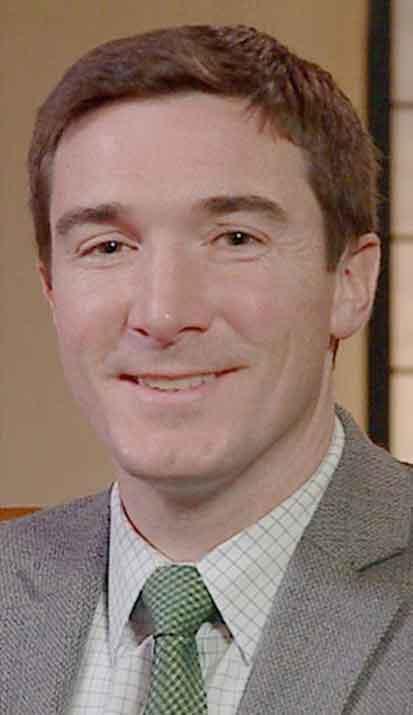Name of the Trial
Yeast-Brachyury Vaccine in Treating Patients with Locally Advanced Chordoma That Cannot Be Removed by Surgery (NCI-15-C-0118). See the protocol abstract.

Dr. Christopher Heery
Credit: Chris Heery
Principal Investigator
Christopher Ryan Heery, NCI Center for Cancer Research
Why This Trial Is Important
Chordoma is a rare type of cancer that forms along the spine or at the base of the skull. About 300 people in the United States are diagnosed with chordoma each year. Although this cancer is slow growing, it gradually extends into nearby bone and soft tissue, and it can spread (metastasize) to other parts of the body. Fewer than 50 percent of patients with chordoma survive 10 years after diagnosis.
Surgery is the main treatment for chordoma, but adjuvant radiation therapy is also often administered. Despite these treatments, chordoma tends to recur, leading to more surgery and/or radiation therapy. For patients whose tumor cannot be removed surgically (unresectable chordoma), chemotherapy may help slow tumor growth in some cases, but no drug has yet been approved by the Food and Drug Administration to treat this disease.
Chordomas are thought to arise from cells leftover from the notochord, tissue that provides a framework for the developing spine of an embryo. After the spine forms, the notochord usually disappears, but some notochord cells may remain in the discs of the spine.
Most chordoma cells and the cells of some other types of cancer produce a protein called brachyury. Normally, this protein is produced by embryonic cells, but it is not produced or is made in only small amounts by the cells of normal adult tissue. This differential production by cancer cells versus normal adult cells makes brachyury an attractive target for immunotherapy.
Researchers at NCI and their partners are developing a cancer vaccine (named GI-6301) that targets brachyury. The vaccine uses yeast cells that have been genetically modified to express human brachyury protein. The modified yeast cells are then killed with heat to inactivate them and injected under the skin, where they will be recognized by the immune system as foreign pathogens. Dendritic cells, which are a type of immune cell, will take up the modified yeast cells and process their proteins, including brachyury, for presentation as antigens to other immune cells called T cells. The researchers hope that the T cells will then target and kill cancer cells that produce brachyury.
In a phase I trial of the vaccine, one patient who had previously undergone radiation therapy for unresectable chordoma experienced a partial response. A second patient who had received radiation to one of two chordoma tumors saw the irradiated tumor shrink, but not the unirradiated tumor. Once the second tumor was irradiated, it too began to shrink, suggesting that radiation may play a role in the efficacy of the vaccine, at least in chordoma patients.
“We became interested in chordoma while developing the brachyury vaccine for other reasons, specifically because we had found that brachyury is an important mediator of the metastatic process in other tumor types,” said Dr. Christopher Heery, the trial’s principal investigator. “So somewhat coincidentally, the target of our experimental vaccine turned out to be very highly expressed in chordoma. Once safety of the vaccine had been established, we started enrolling patients with chordoma and saw some partial responses in irradiated tumors, but not in tumors that had not received radiation. We decided to look closer at these cases to find out why that was.
“Researchers in our lab had previously demonstrated that sublethal doses of radiation can modify tumor behavior in such a way that makes tumor cells more susceptible to immune cells. That research immediately came to mind when we started seeing irradiated tumors, but not nonirradiated tumors, shrink in response to the vaccine,” he explained.
In this phase II clinical trial, adult patients with unresectable localized chordoma who are scheduled to undergo radiation therapy will be randomly assigned to receive the yeast-brachyury vaccine or a placebo injection. Doctors want to see if the overall response rate, progression-free survival, and overall survival differ between patients receiving the vaccine and radiation therapy versus those receiving the placebo and radiation therapy.
Treatment assignments will be blinded. However, patients who experience disease progression during the trial can have their treatment assignment unblinded and be treated with the vaccine if they had previously received the placebo.
“Any doctors interested in referring a patient or any patient interested in participating can contact me directly, and I would be happy to talk to them,” Dr. Heery added. “And, if it turns out a patient doesn’t fit this protocol, they can contact the Chordoma Foundation, which has a dedicated patient navigator to help chordoma patients and their doctors find other treatment options.”
For More Information
See the lists of eligibility criteria and trial contact information, or call the NCI Clinical Trials Referral Office at 888-624-1937. The toll-free call is confidential.
Posted:
Updated:
Reviewed:
Syndicated Content Details:
Source URL: https://www.cancer.gov/node/1041767/syndication
Source Agency: National Cancer Institute (NCI)
Captured Date: 2016-03-23 22:21:25.0
Source URL: https://www.cancer.gov/node/1041767/syndication
Source Agency: National Cancer Institute (NCI)
Captured Date: 2016-03-23 22:21:25.0




No comments